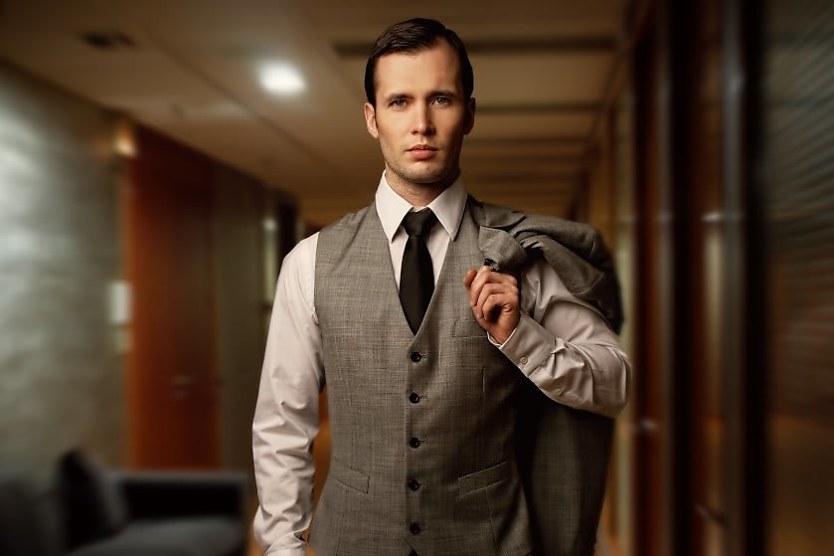Dress for success: The importance of office wear and the double-edged sword of business dress codes
SHARE THIS ARTICLE

Though businesses are easing employee dress requirements, presenting professionally could still serve your career.
How long does it take to form a solid impression of someone? According to NYU researchers, it takes seven seconds to form up to 11 assumptions about a stranger.
How about a first impression? A study from the University of York suggests that a 33- to 100-millisecond glance at a new face is enough.
The depth of these impressions can vary, but the impact of a first impression should never be understated: “In spite of the congeniality of many professional gatherings, judgments are being made, and impressions formed all the time,” said Professor of Psychology at NYU James Uleman.
“The impression you create may affect future job opportunities, collaborations, or other important matters,” added Dr Uleman.
Wardrobe is a crucial part of the first impressions equation. Last week, HR Leader sat down with Jatin Vengurlekar, founder of Montagio Custom Tailoring, to discuss the importance and changing nature of workplace attire.
What do your clothes say about you?
If you have read any Sherlock Holmes, you will know how much clothing can say about a character – fictional or otherwise. Indeed, research shows that observers can make reasonably accurate judgements about another’s age, income, and attachment anxiety simply by looking at a photograph of their shoes.
The analysis, though, is not one-dimensional. There is another frame that affects the way we respond to someone’s clothing – the context in which they are wearing it. A T-shirt and shorts, for instance, might fly at the beach but are likely to raise eyebrows in the office.
“I think it depends on the industry you’re in. So, if you’re in an industry where it is a bit more formal, a bit more structured, maybe you’re doing some high-value deals, you need that kind of negotiating power that a suit can help with,” said Mr Vengurlekar.
“A power suit in a negotiation definitely does give you a leg-up versus a T-shirt. Whereas, in more creative industries – design, media, those kinds of things – I think a T-shirt is good because it’s less restrictive; it’s more free-flowing,” he added.
So, the effectiveness of our clothing does not reside in the fabric alone. It depends on the surrounding circumstances: who we’re meeting with, in what context, and what we’re hoping to achieve.
“A tie can make you look reliable and rooted in tradition. This might be important at an investment firm, where clients want to know you’re serious about stewarding their capital. But it can also come off as stuffy and resistant to change, which may be inappropriate for a tech start-up,” said Molly St Louis for Inc. Australia.
Goodbye to the tie
Another layer to consider when curating workplace attire is broader societal trends. For instance, the COVID-19 pandemic, said Mr Vengurlekar, continues to change the way we dress at work.
“For a while, people were just working from home, so, of course, they were just in their casuals, and maybe for a meeting, they’ll throw on a blazer or something, but even then, they didn’t really have to wear ties and collared shirts and all that,” explained Mr Vengurlekar.
While a collared shirt might have been par for the course pre-COVID-19, choosing to throw on a button-up for a Zoom meeting could strike colleagues as stiff or overly formal.
“So, it did sort of drop down the code or made it a lot more casual for quite some time, and then that’s carried through. Even now, even with people going back to work, the dress code hasn’t returned to what it used to be pre-COVID – which was, of course, suit, shirt, tie, the whole shebang,” said Mr Vengurlekar.
“It’s still kind of that smart casual or semi-formal kind of look. Business casual is the name for it.”
Enforced dress codes
Naturally, not all industries have been affected in the same way. While some never lost the tie, whether in continuance of a historical norm (think horsehair wig), for marketing purposes (a tailor’s suit), or necessity (high-vis), others use formal dress codes to enforce a certain standard.
While dress standards are often implied rather than expressly stated, some companies do share certain dress rules – sometimes punishing employees for non-compliance.
In 2019, a Randstad survey found that 33 per cent of employees said they would quit their jobs if forced to wear more formal attire. That same survey found that 79 per cent of employers had either a casual dress code or no dress code at all.
Clearly, dress matters to employees. As noted by EBN, some employers are relaxing their dress codes in exchange for in-person work arrangements, while others are promising a “casual dress code” as a selling point in job ads.
While dress codes are more relaxed than in the past, it’s worth noting that office dress policy can, and continues to, pose an employee discrimination risk.
According to the Australian Human Rights Commission: “Rules regarding dress could be discriminatory if they single out some employees for different treatment because of their background or certain personal characteristics.”
“It could also be discrimination if an employer puts in place a dress code that appears to treat everyone the same but which actually disadvantages some people because of a certain personal characteristic.”
The transcript of this podcast episode was slightly edited for publishing purposes. To listen to the full conversation with Jatin Vengurlekar, click below:
RELATED TERMS
Your organization's culture determines its personality and character. The combination of your formal and informal procedures, attitudes, and beliefs results in the experience that both your workers and consumers have. Company culture is fundamentally the way things are done at work.
Nick Wilson
Nick Wilson is a journalist with HR Leader. With a background in environmental law and communications consultancy, Nick has a passion for language and fact-driven storytelling.

